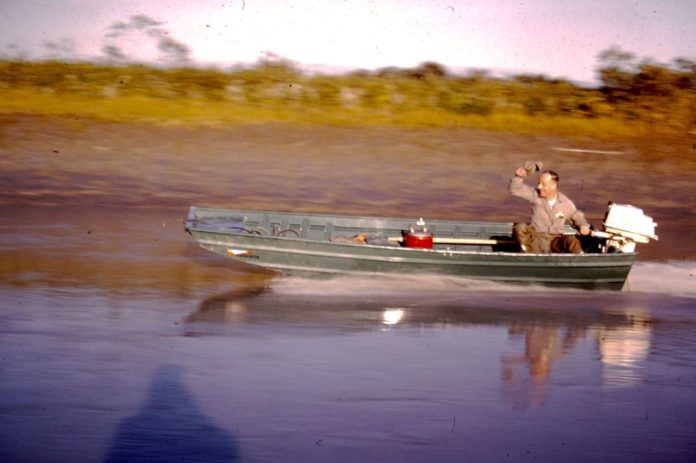
Duck season is upon us, and river running skills will be put to the test as hunters navigate the many braided sloughs of the Copper River Delta.
As always, they may discover that a much-traveled route from prior years could now feature a sandbar or snag lurking just inches under the murky surface, leading to a rather abrupt halt to their water fowling endeavor.
My Dad gave us many early experiences in such voyages of discovery. In fact, I fell in love with duck hunting on my first trip down Alaganik with Dad and my brother Bobby in September 1954. We ended up trying to run back up that slough in the dark after misjudging the falling tide and sheared countless pins on the propellor of a 15-horsepower outboard on snags that were unseen on the way down. We arrived home in the pitch black to be greeted by a very upset mother.
To this day I remember lining up just inside the front door and Mom chewing out Dad with “now just what have you done to these kids Don Shellhorn?”
It was then that I realized I had just been inducted into a special fraternity, and slept soundly with a smile as our exhausted little cocker spaniel Candy snored away at my bedside.
Dad never did truly master the fine art of river running, and over the years he had at least four sleepless nights on Delta sandbars to ponder the intricacies of a tide book.
The first was with Bob Korn on the mud below Tiedeman Slough after a failed attempt in a wild goose chase all the way across the Flats from the Kornhole on Joe Reeve Slough.
The second was with visiting eye doctor Harrison Leer on an ill-advised hunt up Government Slough that started from the Boxcar up Eyak. The pair almost suffered frostbite while stuck in the mud far offshore from the cut banks. Leer, who was Valedictorian of Cordova High School class of 1936 and quite a character, coined the phrase “oh turn blue” to dismiss Captain Shellhorn when he proposed later forays out on the Flats.
Perhaps the most famous misadventure started from our Pete Dahl cabin with Bob “Moose” Henrichs and Harry Nicolet. The trio left headed to Alaganik Landing on a falling tide and failing light. Such was the confusion that they finally gave up, stopped the 14-foot Metal Quachita, pulled it up on the river bank, took the 18-horsepower outboard off, turned the boat over, and slept under it until daybreak.
The last overnighter was by far the most comfortable. It was a sunny July afternoon, of all things, and Mom and Dad were merrily cruising down the river. A shortcut turned out to be the longest way between two points. Captain Shellhorn grounded their 14-foot Boston Whaler a mere 500 yards from the cabin. In fact, it could be seen across deep Pete Dahl Slough. They waited 12 hours through sunset to sunrise before floating off.
By then Mom had learned to always pack a lunch, plus warm clothing, and likely added a spotlight and bug spray to the pre-cruise checklist.
Dad, he always made sure his jacket contained several pouches of Half and Half Pipe Tobacco, and a stock of stubby bottles of Lucky Lager was onboard.
As one can surmise, he had plenty of time to analyze these reoccurring events.
Passing wisdom from generation occurs in many ways, often in the form of storytelling and folklore.
Sitting by the glow of a hot alder fire in the uniquely designed fireplace built by Dad in our duck cabin, telling tales of yore, inevitably we would ask him to recount the details of these memorable misadventures.
And just as inevitably, he would finish by saying “Ah yes. Time and tide wait for no man.”
Alas, it turns out he didn’t coin the phrase. Perhaps he remembered it from his studies of the classics at Seward High School in the 1920’s, for the proverbial phrase first appeared in Chaucer’s Prologue to the Clerk’s Tale, written in 1395.
I do know this. Over 560 years later, Dad proved Chaucer was right – at least four times.














